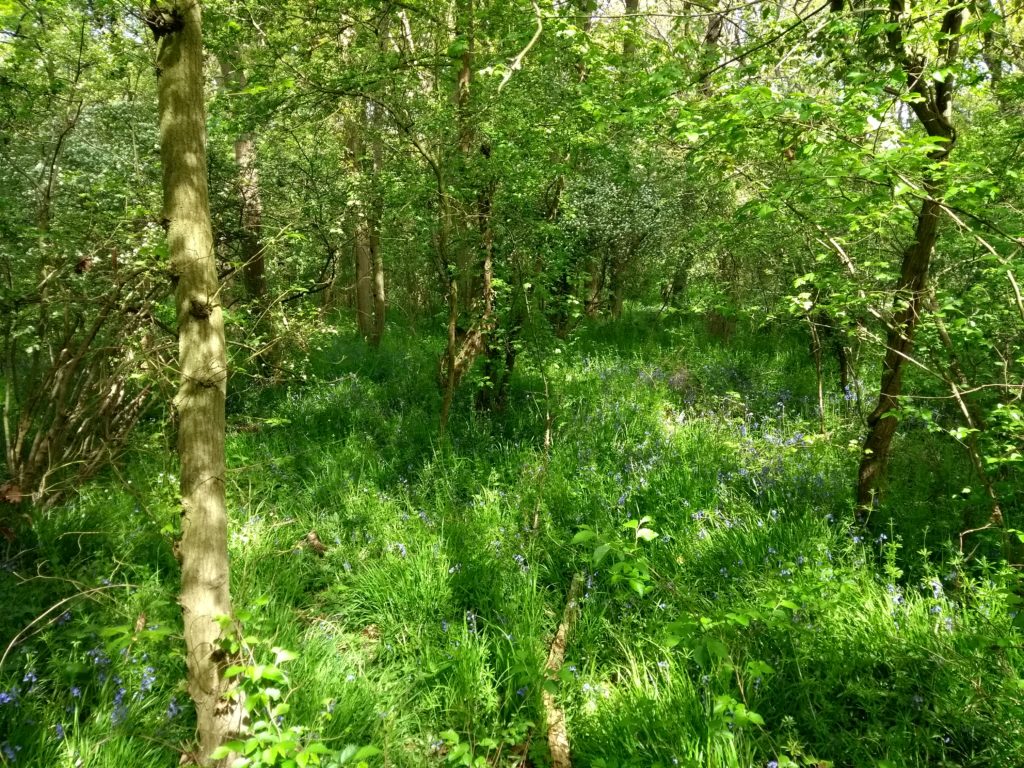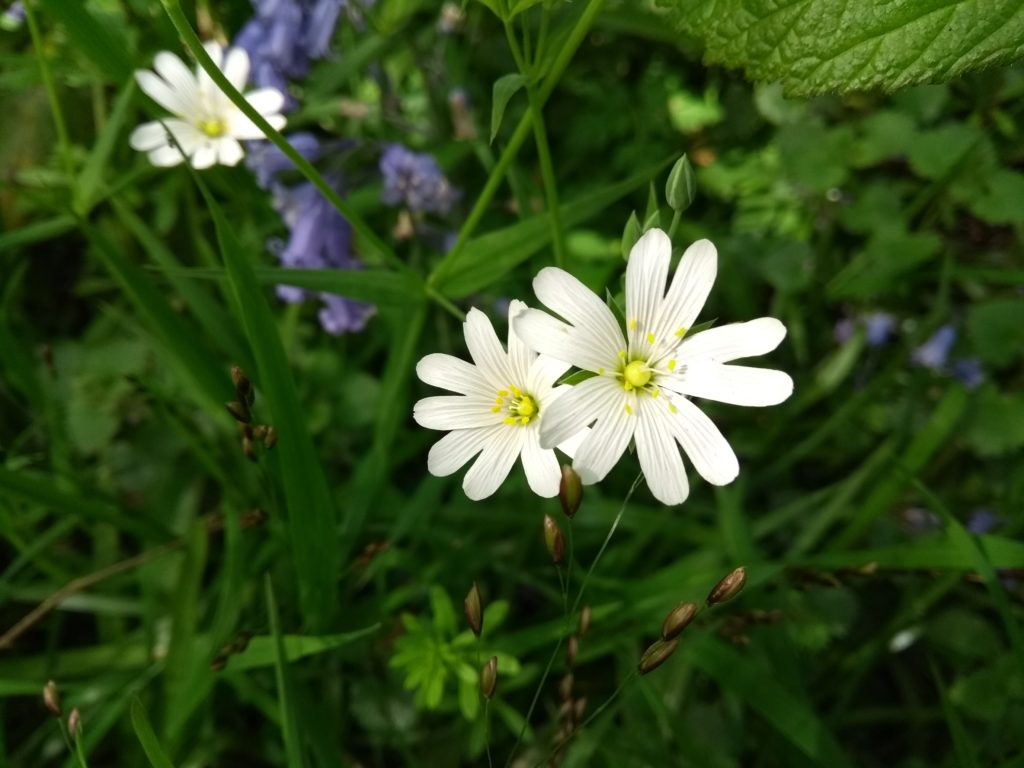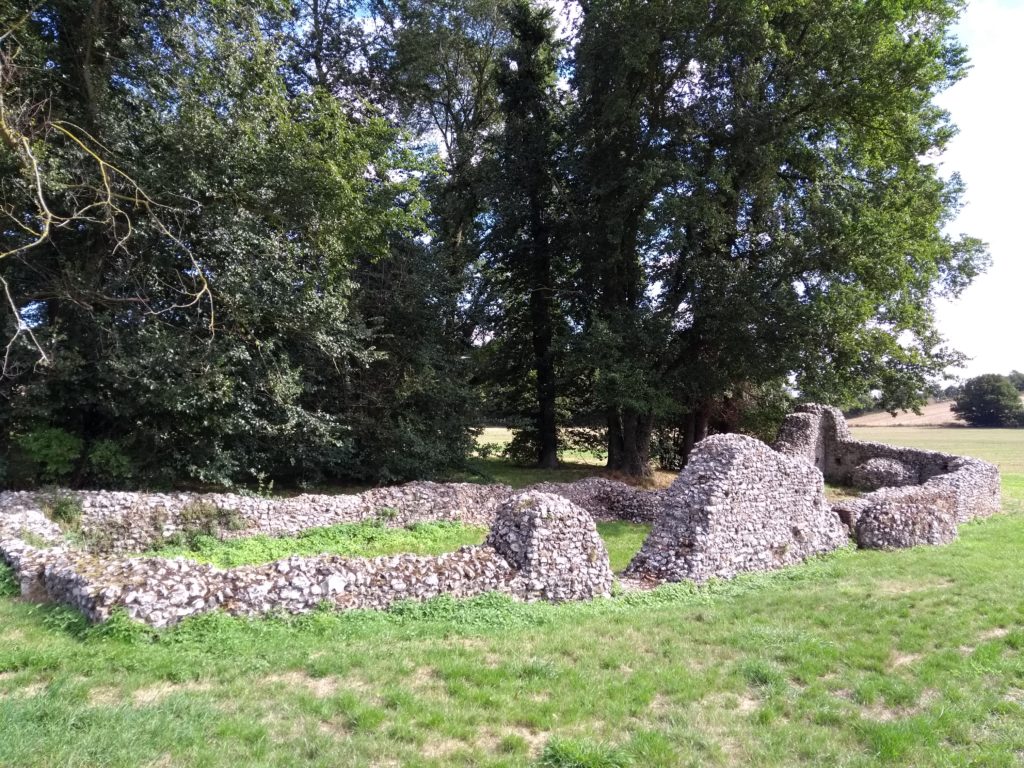It’s time for the annual end-of-year musings known as Shadows and Reflections. Since so many of our lives were lived in thematic overlap this year, we’ve asked our contributors and friends to focus on the small, strange and specific as they look back over the last 12 months. Today it’s the turn of Robert Selby.

April. We have to get out, so we walk to Duncan Down, reputedly the UK’s largest village green. Entered via tracks at the backs of houses, chicane barriers and kissing gates at the end of clapped-out cul-de-sacs, the Down is less village green than 50 acres of open scrubland and hay meadow fringed by woodland – the last slithers in these parts, in fact, of the ancient Blean Forest, squashed up against the roaring Old Thanet Way (the A2990). The Down is the source of, and bisected by, the Gorrell stream, which flows, for long stetches unseen, into Whitstable harbour. Unseen because it has been built over: one suburban pathway, Stream Walk, rather apologetically has the outline of the Gorrell’s course, culverted somewhere beneath, painted onto it. In the nineteenth century the stream was redirected to drain into a reservoir over which, in the 1960s, was built a vast public car park, Gorrell Tank.
Traversing one of the upper Gorrell’s concrete crossing points, over the quivering dapple, we hear a raucous commotion above and, looking up through the lush spring foliage, shielding our eyes from the sun, glimpse a large raptor being mobbed by crows – we tell ourselves it’s a red kite, but it’s probably a buzzard. From the top of the Down the roofs of Whitstable are visible below and, beyond them, the Thames Estuary’s blue merging with the sky’s. I picture the Dig for Victory ploughs peeling brown the green Down’s cone: its earmarking for housing in the 1930s was postponed for wartime crop production, to help reduce the country’s reliance on the Atlantic convoys (which many names on Whitstable’s war memorial perished escorting). ‘I hope in the years to come everyone will be able to take pride in how they responded to this challenge,’ the Queen told us on telly earlier in the month, ‘and those who come after us will say the Britons of this generation were as strong as any.’

After the war Duncan Down was officially awarded Village Green status, allegedly protecting it. We descend into the shade of Benacre Wood where, on islands of sunbeams, the last bluebells are clinging on. The wood really is narrow: twenty yards either side and you’re back in sunlight. Under the blossom of the damson trees is yellow archangel, field mouse-ear, woad, lesser celandine, lesser periwinkle. I send photos of these to my mother for identification. ‘This place you have found is a real gem,’ she replies, ‘I haven’t seen some of these for years.’ All too soon we’re at the wood’s end, and there, across a field, is site fencing. Some 138 new homes are going up, with permission for 400 in total, complete with slip road onto the A2990. Benacre Wood fits into the plan as a wildlife corridor, hemmed in on all sides by the new estate. Kent Online: ‘It is not clear how many affordable homes will be provided.’
*
August. We have to get out, so we drive dead-straight along the A2 – Watling Street – to a farmer’s field outside Faversham, in the middle of which, beside an island of trees, stands the ruin of Faversham Stone Chapel. Ultimately in the care of English Heritage, unadvertised even in their guide to the nearby Roman sites of Richborough – where Watling Street begins – and Reculver, this former Romano-British mausoleum is free to visit and ‘open any reasonable time during daylight hours’, which inevitably draws thoughts to what might go on after dark. Visitors are asked to ‘please park considerately in the nearby lane’, and there it is, between two arable fields, the ditches either side littered with beer cans and the obligatory empty packet of Golden Virginia. Farmworkers, taking a break from their labours? Kids, getting away from it all by driving out to this nowhere place, to drink and smoke with a view of a somnolent rural lane ending at a junction and the sign: ‘Sittingbourne Teynham A2’?
This is what we have needed, to move down into a field, stand before a ruin and read its chipped plaque (‘unauthorised use of metal detectors is prohibited’), then cross the threshold into the nave the newly Christianised Saxons first established 1,400 years ago as an extension to the pre-existing, fourth-century Roman mausoleum in order to make a church. From there we cross over a sill worn smooth by a millennium of soles, down into the mausoleum itself. We sit on the shrine’s ruined outer wall and imagine the broken tilework (opus signinum) that would have decorated the floor – perhaps still does, we muse, under the hummus of the centuries – and the red paint that, our phones tell us, may have adorned walls now nothing but cloudless blue sky and an invading copse.

From inside this temporal palimpsest we can see forward through time, from the Roman period (ordered ragstone and red brick) into the Saxon (disordered flintwork, seashells in the mortar), to the comparatively nascent western extension, constructed in the twelve-hundreds when the church was dedicated to Our Lady of Elwarton, before – in Henry’s VIII’s reign – succumbing to disrepair, then disuse. We have come in out of a time of pestilence, to pause, visualise, and touch without fear, as though the virus is confined only to wherever our own thin stratum of time manifests itself. Our antibacterial handwash is the past – those innumerable days lived before we were born, and into which our own days inextricably move.
*
Robert Selby’s debut poetry collection, ‘The Coming-Down Time’, was published earlier this year by Shoestring Press. A limited number of signed copies are available here.